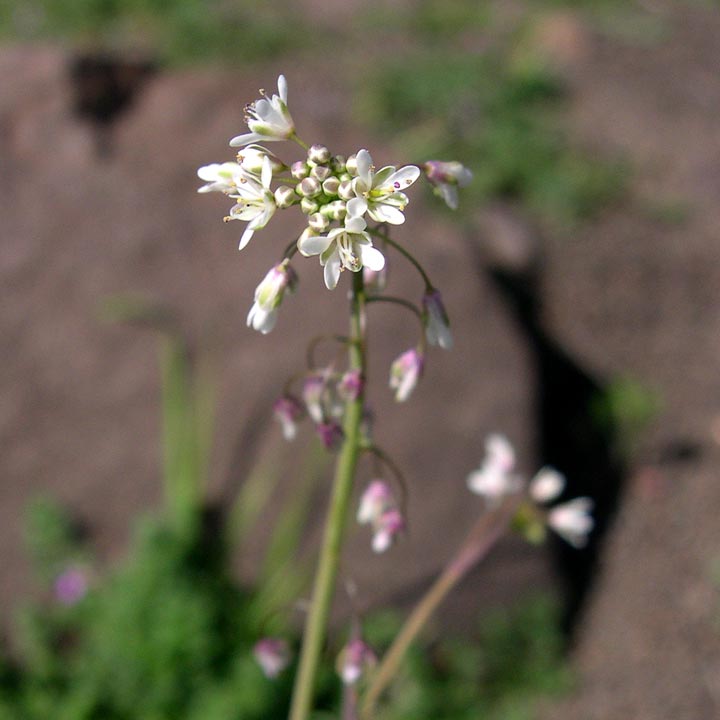|
Family: Brassicaceae |
Annuals; not scapose; (glaucous), glabrous or pubescent. Stems erect, unbranched or branched distally. Leaves basal and cauline; petiolate or sessile; basal (often withered by anthesis or fruiting), not or, rarely, rosulate, shortly petiolate, blade margins subentire, dentate, pinnatifid, or pinnatisect [rarely entire]; cauline sessile, blade (base usually auriculate), margins entire, dentate, or pinnatifid to pinnatisect. Racemes (corymbose, several-flowered), considerably elongated in fruit. Fruiting pedicels often recurved, sometimes divaricate-ascending, slender. Flowers: sepals ascending, oblong to ovate, lateral pair not saccate basally; petals white to purplish, spatulate to oblong, (subequaling or longer than sepals), claw not differentiated from blade; stamens slightly tetradynamous; filaments slightly dilated basally; anthers ovate; nectary glands each side of lateral stamen or semi-annular, median glands absent. Fruits (pendulous), sessile, cymbiform, orbicular, obovate [ovate, elliptic], smooth, strongly latiseptate; valves each with prominent midvein, glabrous or pubescent; replum entire or crenate, often perforated, (winged, wing flattened, with radiating rays); septum obsolete; ovule 1 per ovary; style distinct (relatively short) or obsolete; stigma entire. Seeds aseriate, flattened, not winged, elliptical to orbicular; seed coat not mucilaginous when wetted; cotyledons accumbent. |


